What is Clickmp3.com
Clickmp3.com is a website that is advertised as a tool that allows users to convert YouTube videos to MP3 file format. But the security experts warn that using Clickmp3.com and similar sites is quite dangerous. There are several reasons for this. First of all, the use of such websites violates the YouTube rules, which prohibit directly downloading videos. Second, even more important, Clickmp3.com and others like it use rogue ad networks. The security researchers determined that Clickmp3.com redirects users to web pages that are not trustworthy, as they are designed to deceive users.
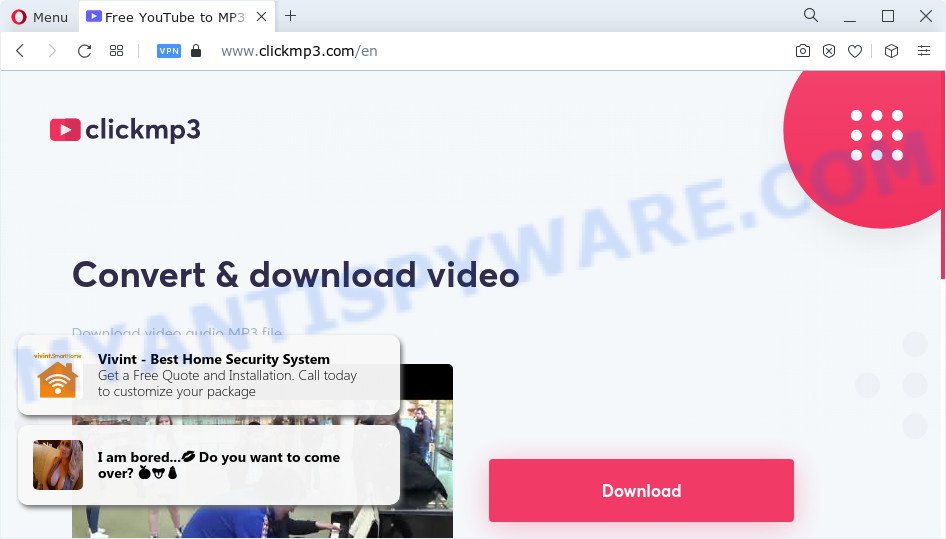
During the research, Clickmp3.com redirected users to gosyncrise.com, infopicked.com, myfood.ltd, adxpartner.com, date4you.net, other unwanted and suspicious sites. Date4you.net is a deceptive web-site that forces unsuspecting users into signing up for push notifications to send unwanted advertisements directly to the desktop. This webpage shows the ‘Confirm notifications’ pop-up states that clicking ‘Allow’ will let you access the content of the webpage, connect to the Internet, enable Flash Player, download a file, watch a video, and so on.

Once enabled, the Clickmp3.com browser notification spam will start popping up in the lower right corner of Windows or Mac periodically and spam you with annoying adverts. The push notifications will promote ‘free’ online games, giveaway scams, dubious internet browser add-ons, adult web-pages, and adware bundles as shown on the screen below.

Threat Summary
| Name | Clickmp3.com (YouTube to MP3 converter, Download MP3 files from YouTube videos and save them on your computer) |
| Type | spam notifications ads, pop-ups, pop up advertisements, pop up virus |
| Distribution | potentially unwanted apps, misleading pop-up advertisements, social engineering attack, adwares |
| Symptoms |
|
| Removal | Clickmp3.com removal guide |

Of course, in addition to the websites shown above, Clickmp3.com can redirect users to other dangerous sites, among which there may be sites offering to install PUPs, browser hijackers and adware. Browser hijacker is a malware that changes browser settings such as homepage and search engine. Adware is a software that is created to earn money for its developer by presenting unwanted advertisements to a user while the user is browsing the Internet.
Where the unwanted ads comes from
Most of unwanted ads and pop-ups come from web-browser toolbars and/or add-ons, BHOs (browser helper objects) and bundled software. In many cases, these items claim itself as applications which improve your experience on the Net by providing a fast and interactive startpage or a search provider that does not track you. Remember, how to avoid the unwanted software. Be cautious, start only reputable programs which download from reputable sources. NEVER install any unknown and questionable programs.
How to remove Adware and Unwanted ads
According to experienced security researchers, adware and unwanted pop up advertisements removal can be done manually and/or automatically. These tools which are listed below will help you get rid of adware, harmful browser addons, malware and PUPs . However, if you’re not willing to install other applications to remove unwanted ads, then use instructions listed below to restore your PC settings to their previous states.
Uninstall potentially unwanted apps
The main cause of unwanted advertisements is potentially unwanted programs, adware software or other undesired applications that you may have unintentionally installed on the computer. You need to identify and uninstall all suspicious software.
|
|
|
|
See more details in the video guidance below.
Remove spam notifications from web browsers
if you became a victim of online criminals and clicked on the “Allow” button, then your web browser was configured to show intrusive ads. To remove the advertisements, you need to remove the notification permission that you gave a scam website to send spam notifications.
|
|
|
|
|
|
Reset Google Chrome
Reset Chrome settings will help you to completely get rid of any unwanted ads. The result of activating this function will bring Chrome settings back to its default values. This can remove unwanted advertisements and disable malicious extensions. It’ll keep your personal information like browsing history, bookmarks, passwords and web form auto-fill data.

- First launch the Google Chrome and press Menu button (small button in the form of three dots).
- It will open the Chrome main menu. Choose More Tools, then click Extensions.
- You will see the list of installed plugins. If the list has the add-on labeled with “Installed by enterprise policy” or “Installed by your administrator”, then complete the following tutorial: Remove Chrome extensions installed by enterprise policy.
- Now open the Chrome menu once again, press the “Settings” menu.
- You will see the Google Chrome’s settings page. Scroll down and click “Advanced” link.
- Scroll down again and press the “Reset” button.
- The Chrome will open the reset profile settings page as on the image above.
- Next click the “Reset” button.
- Once this process is finished, your web-browser’s homepage, default search provider and new tab page will be restored to their original defaults.
- To learn more, read the post How to reset Google Chrome settings to default.
Reset Mozilla Firefox
This step will allow you get rid of unwanted ads, third-party toolbars, disable malicious add-ons and revert back your default homepage, new tab page and search provider settings.
Start the Firefox and click the menu button (it looks like three stacked lines) at the top right of the internet browser screen. Next, click the question-mark icon at the bottom of the drop-down menu. It will show the slide-out menu.
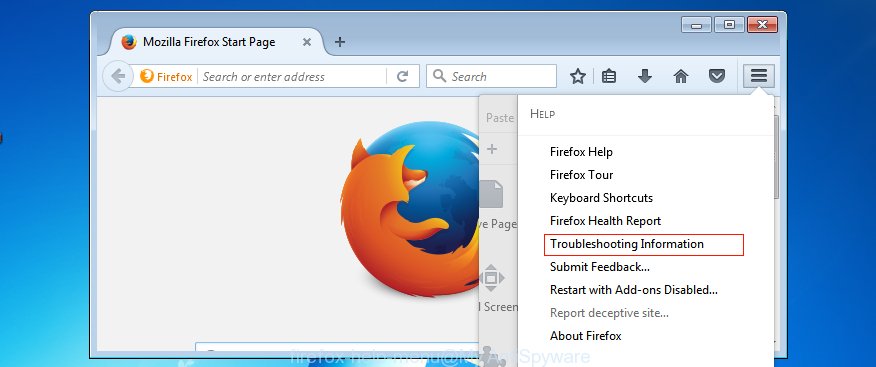
Select the “Troubleshooting information”. If you are unable to access the Help menu, then type “about:support” in your address bar and press Enter. It bring up the “Troubleshooting Information” page as displayed on the image below.
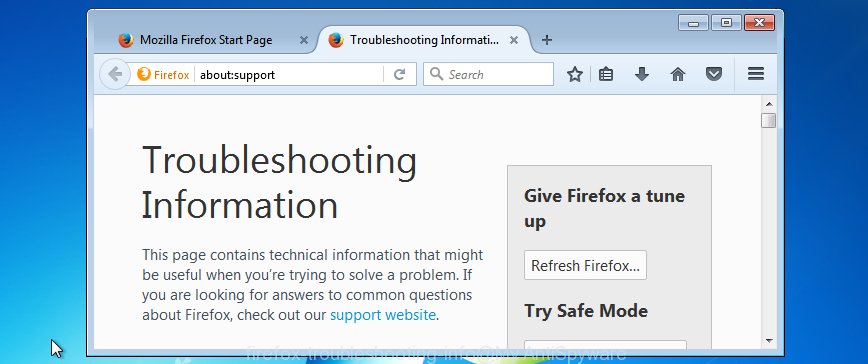
Click the “Refresh Firefox” button at the top right of the Troubleshooting Information page. Select “Refresh Firefox” in the confirmation dialog box. The Firefox will start a procedure to fix your problems that caused by adware. After, it’s complete, click the “Finish” button.
Automatic Removal of Adware
If you are not expert at computer technology, then we suggest to use free removal tools listed below to remove adware and unwanted popup ads for good. The automatic method is highly recommended. It has less steps and easier to implement than the manual solution. Moreover, it lower risk of system damage. So, the automatic adware removal is a better option.
Zemana Anti Malware is an amazing tool to get rid of unwanted pop-up ads from the Microsoft Internet Explorer, Google Chrome, Firefox and MS Edge. It also deletes malware and adware from your PC system. It improves your system’s performance by uninstalling PUPs.
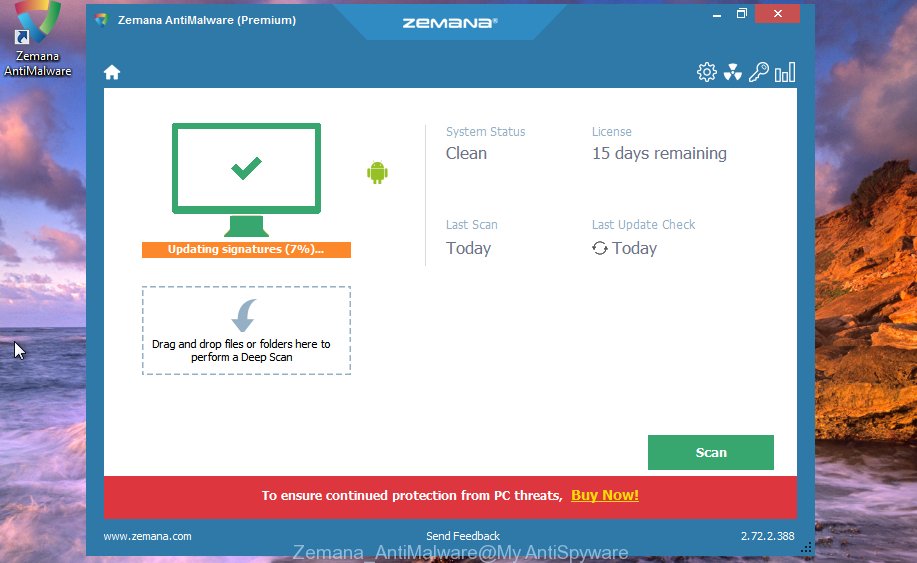
- Zemana AntiMalware (ZAM) can be downloaded from the following link. Save it on your MS Windows desktop or in any other place.
Zemana AntiMalware
163355 downloads
Author: Zemana Ltd
Category: Security tools
Update: July 16, 2019
- At the download page, click on the Download button. Your browser will show the “Save as” prompt. Please save it onto your Windows desktop.
- After downloading is done, please close all apps and open windows on your PC system. Next, start a file named Zemana.AntiMalware.Setup.
- This will run the “Setup wizard” of Zemana onto your PC. Follow the prompts and don’t make any changes to default settings.
- When the Setup wizard has finished installing, the Zemana will launch and open the main window.
- Further, click the “Scan” button . Zemana tool will begin scanning the whole computer to find out adware software that causes unwanted ads in your browser. A system scan may take anywhere from 5 to 30 minutes, depending on your PC system. When a malicious software, adware or PUPs are detected, the count of the security threats will change accordingly. Wait until the the checking is finished.
- When the scan get completed, the results are displayed in the scan report.
- Review the report and then press the “Next” button. The tool will remove adware. After finished, you may be prompted to reboot the personal computer.
- Close the Zemana Anti-Malware (ZAM) and continue with the next step.
How to stay safe online
By installing an ad-blocker application such as AdGuard, you’re able to block suspicious websites, autoplaying video ads and delete a ton of distracting and unwanted ads on websites.
Visit the page linked below to download the latest version of AdGuard for MS Windows. Save it on your Desktop.
26458 downloads
Version: 6.4
Author: © Adguard
Category: Security tools
Update: November 15, 2018
When downloading is finished, double-click the downloaded file to start it. The “Setup Wizard” window will show up on the computer screen as displayed in the figure below.
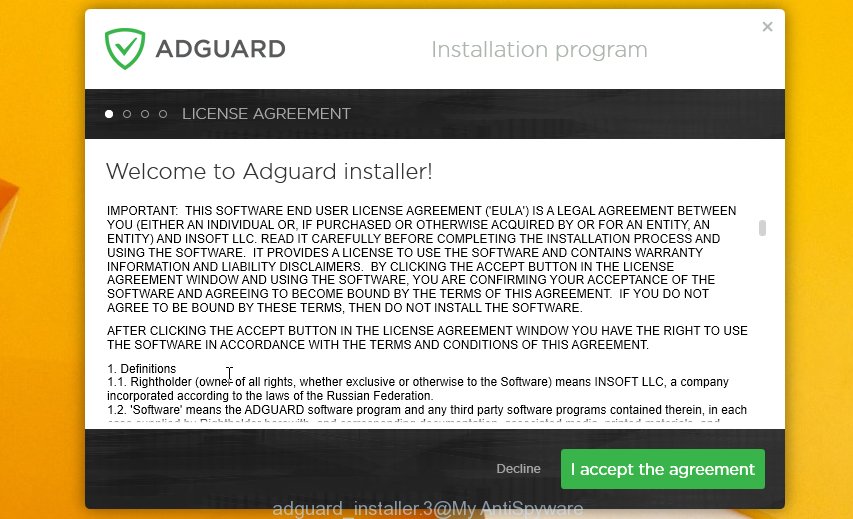
Follow the prompts. AdGuard will then be installed and an icon will be placed on your desktop. A window will show up asking you to confirm that you want to see a quick guide as on the image below.

Click “Skip” button to close the window and use the default settings, or press “Get Started” to see an quick instructions that will help you get to know AdGuard better.
Each time, when you run your machine, AdGuard will start automatically and stop unwanted ads, block Clickmp3.com ads, as well as other harmful or misleading web-sites. For an overview of all the features of the program, or to change its settings you can simply double-click on the AdGuard icon, that is located on your desktop.
To sum up
Now your PC system should be clean of the adware software that causes multiple pop up ads. We suggest that you keep AdGuard (to help you stop unwanted ads and unwanted malicious web pages) and Zemana (to periodically scan your computer for new adwares and other malware). Probably you are running an older version of Java or Adobe Flash Player. This can be a security risk, so download and install the latest version right now.
If you are still having problems while trying to delete unwanted ads from the Chrome, Edge, Internet Explorer and Firefox, then ask for help here here.



















